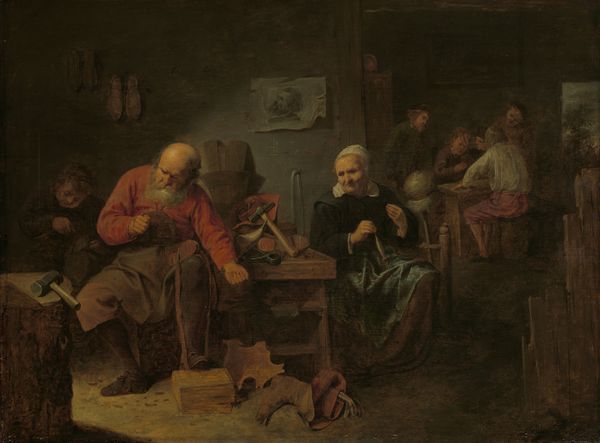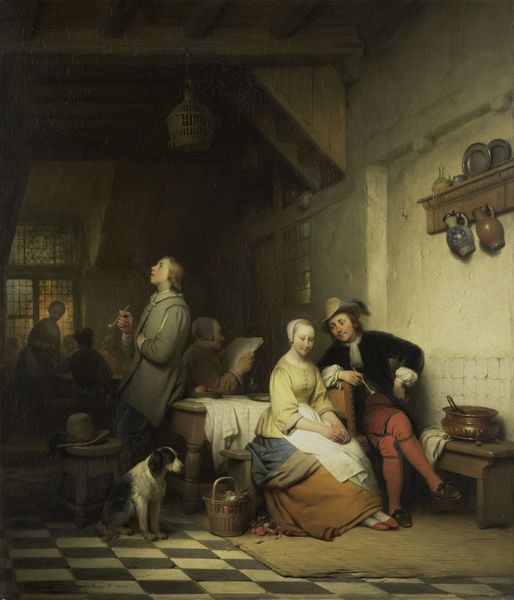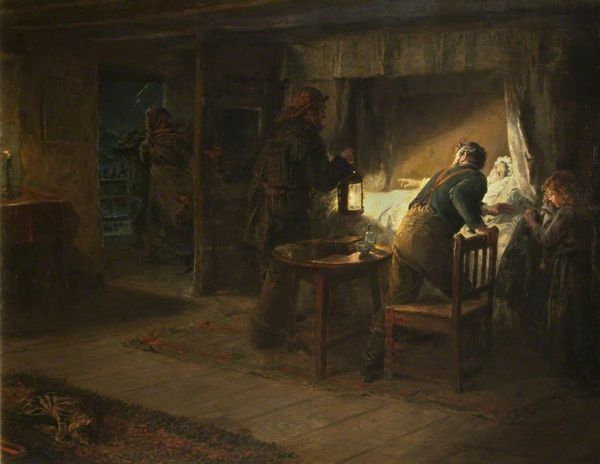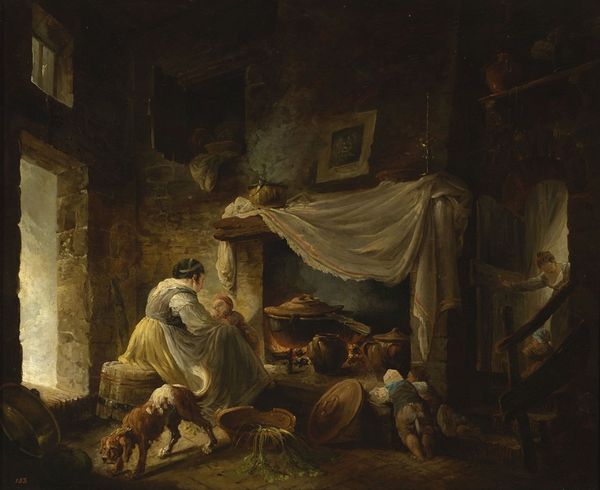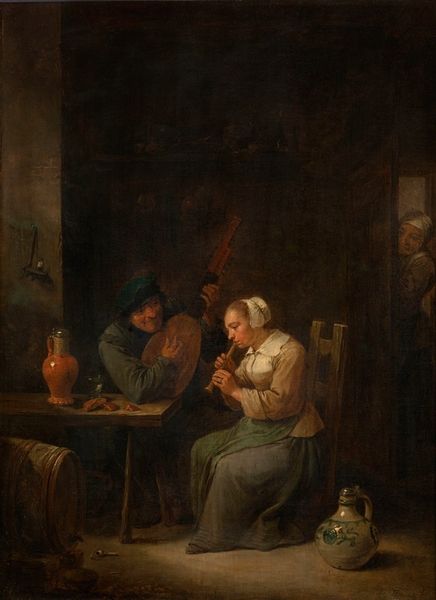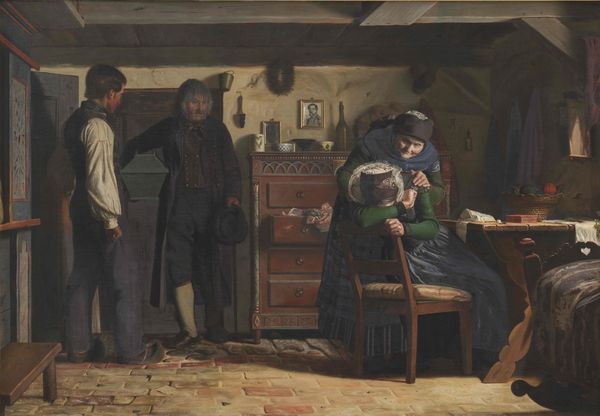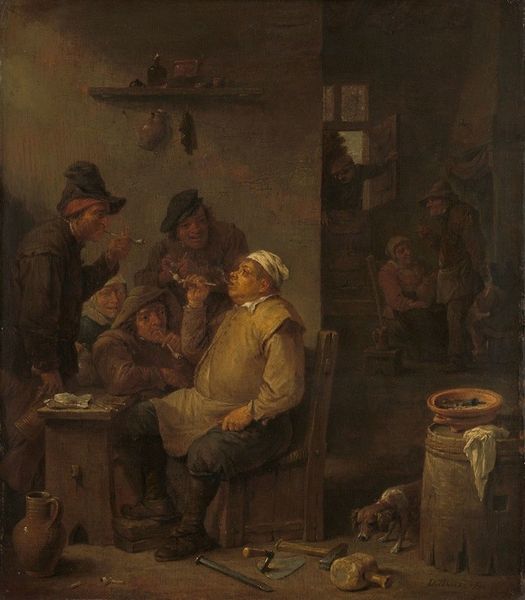
The farewell of the volunteer 1858
0:00
0:00
vincenzocabianca
Museo civico Giovanni Fattori, Livorno, Italy
Dimensions: 77.8 x 92 cm
Copyright: Public domain
Editor: This is Vincenzo Cabianca’s "The Farewell of the Volunteer," painted in 1858. It's an oil painting that captures such a tender, sorrowful moment. What strikes me is the quiet intensity of the scene, the muted colors emphasizing the somber mood. How would you interpret this work? Curator: It's crucial to consider the socio-political context in which Cabianca created this piece. 1858 was a period of intense nationalist fervor in Italy, leading up to the Second Italian War of Independence. Images like this weren't just personal dramas; they were powerful endorsements of patriotic sacrifice and played a vital role in shaping public sentiment. Notice how the old man seems to bless the departing soldier. What effect do you think that would have on viewers? Editor: That’s fascinating. I hadn’t thought about it as deliberate propaganda, but the blessing definitely adds a layer of gravity. It elevates the soldier's departure to something almost sacred. Do you think that's a fair assessment? Curator: Absolutely. And think about the role of genre painting at the time. By depicting everyday people caught in this emotionally charged moment, Cabianca is appealing to a wide audience and solidifying the idea that this national cause is everyone’s concern, not just that of the elite. It is creating empathy, a feeling of collective responsibility. The very act of portraying it validates this fervor, ensuring it's recorded, seen and validated by future generations. Editor: So, beyond just depicting a farewell, the painting participates in constructing a national narrative and leveraging Romanticism in support of the unification of Italy. Curator: Precisely. It uses sentimentality and relatable imagery to reinforce a political agenda. It demonstrates how art became integral to defining and mobilizing national identity in mid-19th-century Europe. Editor: I'll never see paintings the same way again. I was too focused on the romanticism; I missed how much these scenes are part of historical political movements. Curator: Art doesn't exist in a vacuum. Considering these elements adds layers of understanding, deepening our appreciation and revealing art's powerful cultural role.
Comments
No comments
Be the first to comment and join the conversation on the ultimate creative platform.

